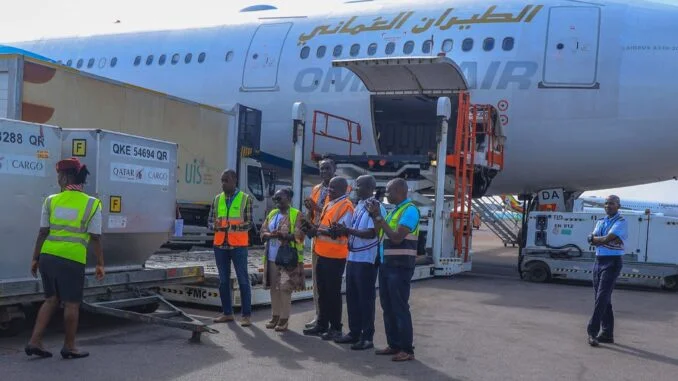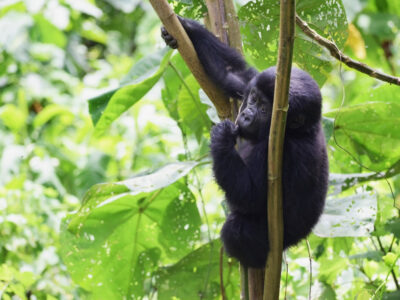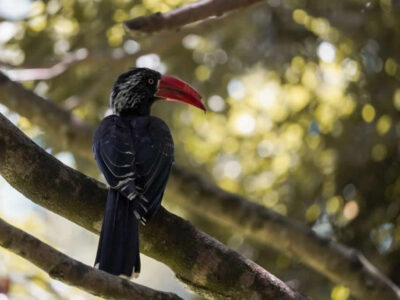On Sunday Uganda received 39 of Uganda’s cultural heritage artifacts that have for over 100 years been kept in the Museum of Archaeology and Anthropology at Cambridge University.
The objects come from all over Uganda. Among them a drum from Bunyoro, sent to Cambridge in 1920.
As early as the 1890s, the artifacts were originally collected from different parts of the country by British colonial administrators, anthropologists, missionaries, and soldiers.
According to Prof Derek Peterson who has coordinated the return of the items, many of these artifacts were acquired in the early 20th century by the missionary anthropologist John Roscoe, who was closely tied to Cambridge,
Peterson said that among the most consequential objects are a collection of balongo–sacred ‘twins’–that had important ritual purposes in Buganda. They are working with the Buganda kingdom to return them to the tombs from which they were taken.
“These artifacts are a significant step towards helping the museum tell a more concrete Ugandan cultural history story, unlike the present which was designed by a colonial mindset, and this is what is being worked on now.” Peterson, a history professor from the University of Michigan, currently working with the Uganda Museum to expand its capacity, says.
“Such items ended up in Britain, as loot because the British curators, missionaries, and officials, were convinced that African cultures were not worthwhile, and belonged to the museum.” He points out.
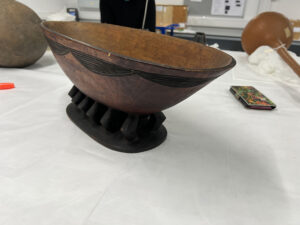
They ended up in Cambridge, because all the ways of life, all the religions, had been devalued, and collectors like John Roscoe, could go around and acquire extraordinarily important items and take them off to Cambridge where they became part of the museum’s collections. Returning them is a way of honoring a past that Ugandans have lost but need to remember, and bring people’s lives back in focus, and recover.
Andrew Mellon Foundation extended support to the return of these artifacts which cost up to USD 100,000 and facilitated the research and transportation of important Ugandan artifacts back to the communities.
The State Minister for Tourism, Wildlife and Antiquities Martin Mugarra stated while receiving the artifacts saying that the government is in the process of reclaiming all artifacts that were taken from different Ugandan communities by the colonial government between the mid-1800s and 1900s.
“The repatriation of artifacts is part of the ongoing wave to return what colonial administrators took from Africa. The artifacts which belong to Buganda, Lango, Bunyoro, and Ankole, among others, will be used to further enrich the country’s cultural history and heritage.” He added
The Commissioner for Museums and Monuments Jackline Nyiracyiza mentioned that the process of returning these artifacts started in 2019, but was disrupted by the COVID-19 pandemic.
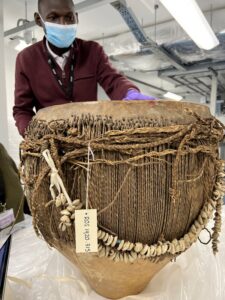
“Cambridge University still has many Ugandan artifacts, both archeological and ethnographic. The returned artifacts include five human remains of the Balongo (Sacred Twins) vessel acquired from Buganda in 1907 and these will be returned to Wamala tombs where they were picked from.” She added.
The consignment also has a headdress made of human hair, acquired from Lango in 1937, and beautifully decorated pots from Ankole, acquired in the 1920sb according to Nyiracyiza.
This is the second time Uganda is receiving its cultural heritage artifacts from Cambridge. The first return occurred in July 1962, during the independence celebrations when the Kibuuka Omubaale regalia were repatriated. The Kibuuka showcase at the Uganda Museum is one of the centerpiece artifacts of the museum exhibits.
“The Ministry will first analyze their condition at the Uganda Museum, and later organize an exhibition for Ugandan and foreign visitors to view and celebrate the return of these historical objects from Europe.” the commissioner said before opening repatriated artifacts for public viewing.
Nyiracyiza pointed out that apart from the five objects that will be returned to the Buganda and the rest will be kept at the Uganda museum, as the main repository of all the Ugandan objects, adding that with time each will be taken back to where they were picked from, after deeming it fit that the communities can carefully handle them.a

